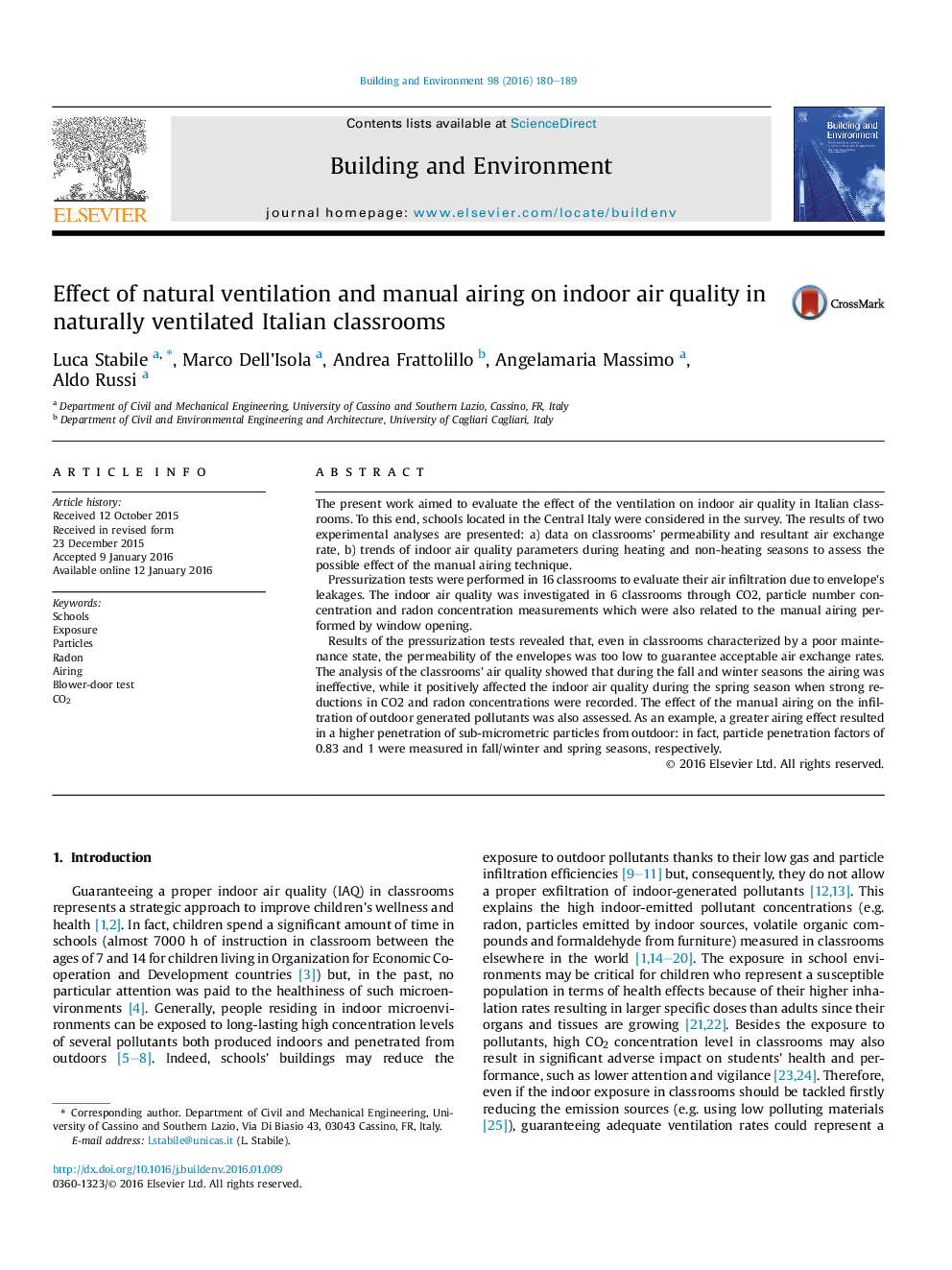| Article ID | Journal | Published Year | Pages | File Type |
|---|---|---|---|---|
| 6699569 | Building and Environment | 2016 | 10 Pages |
Abstract
Results of the pressurization tests revealed that, even in classrooms characterized by a poor maintenance state, the permeability of the envelopes was too low to guarantee acceptable air exchange rates. The analysis of the classrooms' air quality showed that during the fall and winter seasons the airing was ineffective, while it positively affected the indoor air quality during the spring season when strong reductions in CO2 and radon concentrations were recorded. The effect of the manual airing on the infiltration of outdoor generated pollutants was also assessed. As an example, a greater airing effect resulted in a higher penetration of sub-micrometric particles from outdoor: in fact, particle penetration factors of 0.83 and 1 were measured in fall/winter and spring seasons, respectively.
Related Topics
Physical Sciences and Engineering
Energy
Renewable Energy, Sustainability and the Environment
Authors
Luca Stabile, Marco Dell'Isola, Andrea Frattolillo, Angelamaria Massimo, Aldo Russi,
